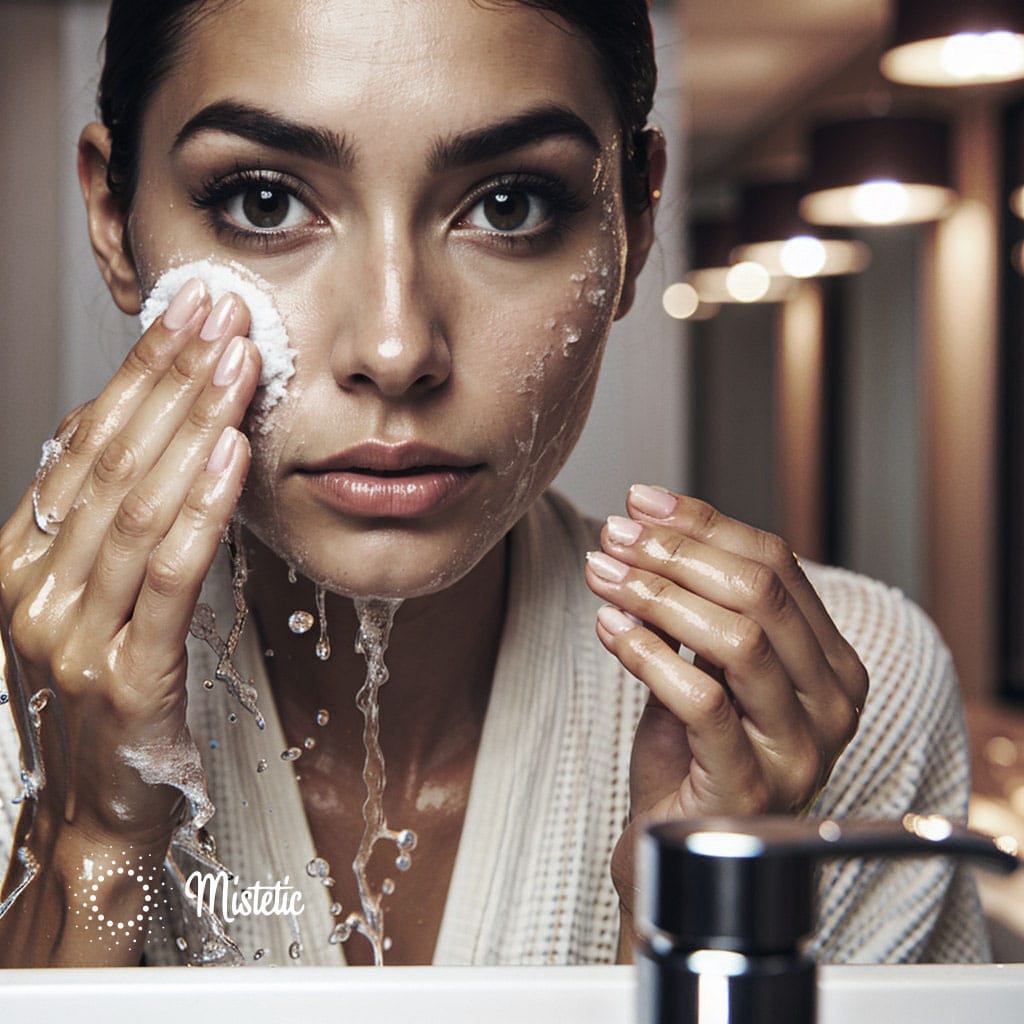My Skincare Savior: How This Hydrophilic Cleansing Oil Saved My Skin!
Hydrophilic cleansing oils have gained immense popularity in the skincare industry for their ability to effectively remove makeup, dirt, and impurities from the skin while providing hydration and nourishment. This article delves into the benefits, ingredients, and application techniques of hydrophilic cleansing oils, providing a comprehensive overview for anyone looking to enhance their skincare routine.
What Are Hydrophilic Cleansing Oils?
Hydrophilic cleansing oils are unique formulations designed to dissolve oil-based impurities on the skin. The term “hydrophilic” means “water-loving,” indicating that these oils can emulsify and rinse off with water. Unlike traditional oil cleansers that may leave a greasy residue, hydrophilic oils transform into a milky emulsion when mixed with water, making them easy to rinse away without clogging pores.
The Science Behind Hydrophilic Cleansing
The primary function of hydrophilic cleansing oils is to break down and remove makeup, sunscreen, and excess sebum from the skin. They contain surfactants that help emulsify the oil and water, allowing for thorough cleansing without stripping the skin of its natural moisture. This is particularly beneficial for individuals with dry or sensitive skin, as it minimizes irritation while effectively cleansing.
Key Ingredients in Hydrophilic Cleansing Oils
Hydrophilic cleansing oils typically contain a blend of natural oils and nourishing ingredients. Here are some common components:

- Jojoba Oil: Known for its similarity to human sebum, jojoba oil helps balance oil production while providing hydration. It penetrates deeply into the skin, offering moisturizing benefits without clogging pores.
- Sweet Almond Oil: Rich in vitamins A and E, sweet almond oil nourishes and softens the skin. It also has anti-inflammatory properties that can soothe irritation.
- Grapeseed Oil: This lightweight oil is packed with antioxidants and fatty acids that help maintain skin elasticity and firmness. It is ideal for oily or acne-prone skin due to its non-comedogenic nature.
- Wheat Germ Oil: High in vitamin E, wheat germ oil promotes skin regeneration and helps protect against environmental damage. It also aids in maintaining moisture levels in the skin.
- Monoi Oil: Derived from Tahitian gardenias soaked in coconut oil, monoi oil is known for its moisturizing properties and ability to impart a radiant glow to the skin.
These ingredients work synergistically to cleanse, hydrate, and nourish the skin effectively.
Benefits of Using Hydrophilic Cleansing Oils
- Effective Makeup Removal: Hydrophilic cleansing oils excel at breaking down even waterproof makeup products without harsh scrubbing.
- Hydration: Unlike traditional cleansers that may strip the skin of moisture, hydrophilic oils leave the skin feeling soft and hydrated.
- Gentle on Skin: Formulated with natural oils, these cleansers are suitable for all skin types, including sensitive and acne-prone skin.
- Convenience: The emulsifying properties allow for quick and easy rinsing, making them a convenient option for daily use.
- Versatile Use: They can be used as part of a double-cleansing routine or as a standalone cleanser for those who prefer a lighter approach.
Check out our Numbuzin No.1 Easy Peasy Cleansing! If you’re on the hunt for a cleansing oil that effortlessly tackles waterproof makeup, deeply cleanses pores, and nourishes your skin all at once, this could be the perfect match for you! It’s easy to see why it boasts an impressive 4.9/5 satisfaction rating and a 98% repurchase rate.
Dual-action formula: Effectively removes makeup (including waterproof) and cleanses pores, with 98.44% fine dust cleaning and 94.39% pore waste cleaning efficiency
Lightweight texture: Provides thorough cleansing without leaving a greasy residue, making it suitable for various skin types, including oily skin.
Key ingredients: Contains corn oil and Macadamia Ternifolia seed oil to dissolve impurities and moisturize the skin.
How to Use Hydrophilic Cleansing Oils
Using hydrophilic cleansing oils is straightforward:
- Start with Dry Skin: Apply a small amount of cleansing oil onto dry hands and massage it onto dry skin. Focus on areas with heavy makeup or impurities.
- Emulsify with Water: After massaging for about 30 seconds, wet your hands with warm water and continue massaging your face. The oil will begin to emulsify into a milky consistency.
- Rinse Thoroughly: Rinse your face with warm water until all traces of the cleanser are removed. Pat your face dry with a clean towel.
- Follow Up: For best results, follow up with a second cleanser if you’re practicing double cleansing or proceed with your regular skincare routine.

Choosing the Right Hydrophilic Cleansing Oil
When selecting a hydrophilic cleansing oil, consider your skin type:
- Oily/Acne-Prone Skin: Look for lightweight formulas containing non-comedogenic oils like grapeseed or jojoba oil.
- Dry/Sensitive Skin: Opt for richer formulations with nourishing ingredients like sweet almond or wheat germ oil to provide extra hydration.
- Combination Skin: A balanced formula that combines various oils can help address different areas of concern effectively.
Conclusion
Hydrophilic cleansing oils are an excellent addition to any skincare routine due to their effective cleansing properties and nourishing benefits. By understanding their ingredients and how to use them properly, individuals can achieve clean, hydrated skin without compromising its natural barrier. Whether you’re looking to remove stubborn makeup or simply cleanse your face after a long day, hydrophilic cleansing oils offer a gentle yet effective solution that caters to various skin types and concerns. Embrace this innovative skincare product and enjoy the multitude of benefits it brings!










